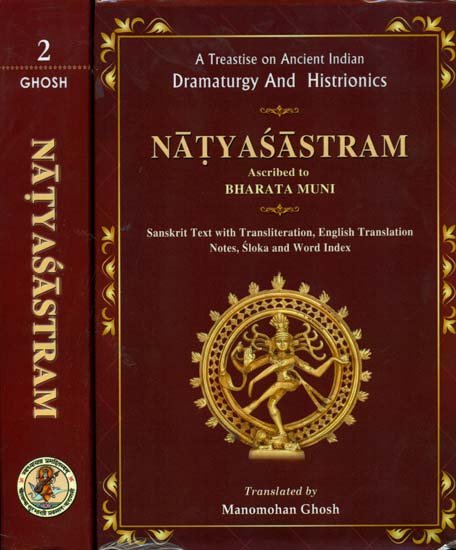Natyashastra (English)
by Bharata-muni | 1951 | 240,273 words | ISBN-13: 9789385005831
The English translation of the Natyashastra, a Sanskrit work on drama, performing arts, theater, dance, music and various other topics. The word natyashastra also refers to a global category of literature encompassing this ancient Indian tradition of dramatic performance. The authorship of this work dates back to as far as at least the 1st millenn...
Part 5 - More Data of India’s Cultural History in the Nāṭyaśāstra
1. Language
The NŚ mentions besides Sanskrit and the various kinds of Prakrit the Ardha-Saṃskṛta as the language of Dhruvās.[1] By this last term we are probably to understand the so-called Gāthā-Sanskrit which Prof. Edgerton has called hybrid Sanskrit. His hypothesis about its origin does not however appear to be convincing. This new nomenclature seems to ignore the historical circumstances which brought this kind of language into existence.
2. Metre
In course of describing Dhruvās the NŚ has described various metres. Most of these names are otherwise unknown.[2]
3. The Arthasāstra
The NŚ (XXXIV. 82-98) describes a king, an army-leader, a purohita (chaplain), ministers, secretaries, judges, wardens of princes (kumārādhikṛta) and refers in this connexion to the views of Bṛhaspati who seems to be no other than the old master of this name repeatedly referred to in the Arthaśāstra of Kauṭilya. This probably points to the great antiquity of the NŚ. It is also gathered from the NŚ (XXXIV. 73) that Dauvārika[3] mentioned as a great dignitary connected with the royal palace was a snātaka[4] i.e., a Brāhmaṇa who has duly finished his Vedic studies. This seems to give a clue to the sudden rise of the Suṅgas (who were Brāhmaṇas) after the Maurya dynasty declined. Puṣyamitra Suṅga described by Sylvain Lévi as a a “mayor of the palace” was probably a snātaka employed as Dauvārika by the last Maurya king.
The Sabhāstāra mentioned in the NŚ. (XXIV. 83, 98) translated as members of the (royal) court, is also a very old word. The Kumārādhikṛta (XXXIV. 83, 97) seems to be the warden of princes mentioned in the Arthaśāstra.
Footnotes and references:
[1]:
XXXII. 440-442.
[2]:
See XXXII.
[3]:
See AS.
[4]:
See XXIV. 73-74.
